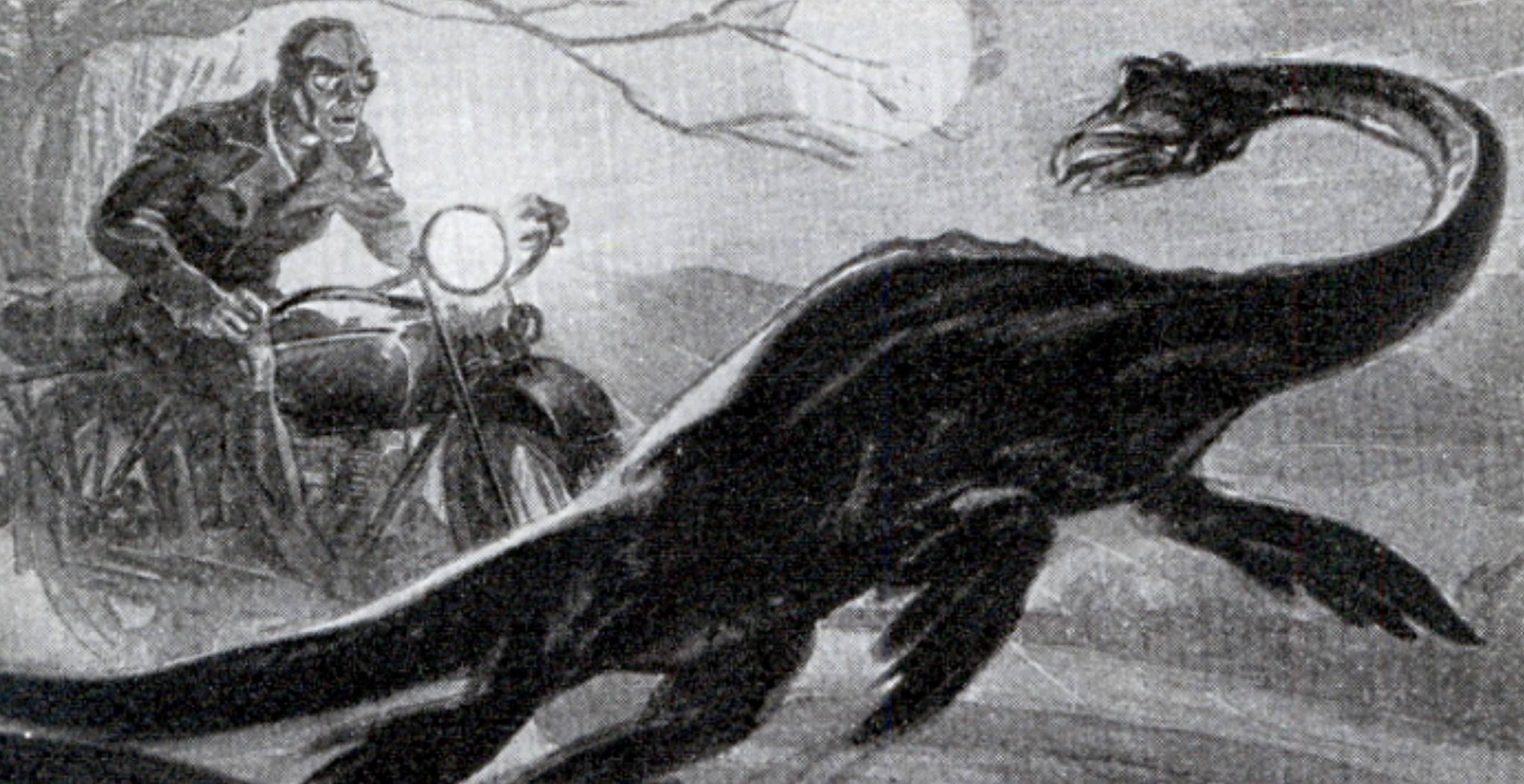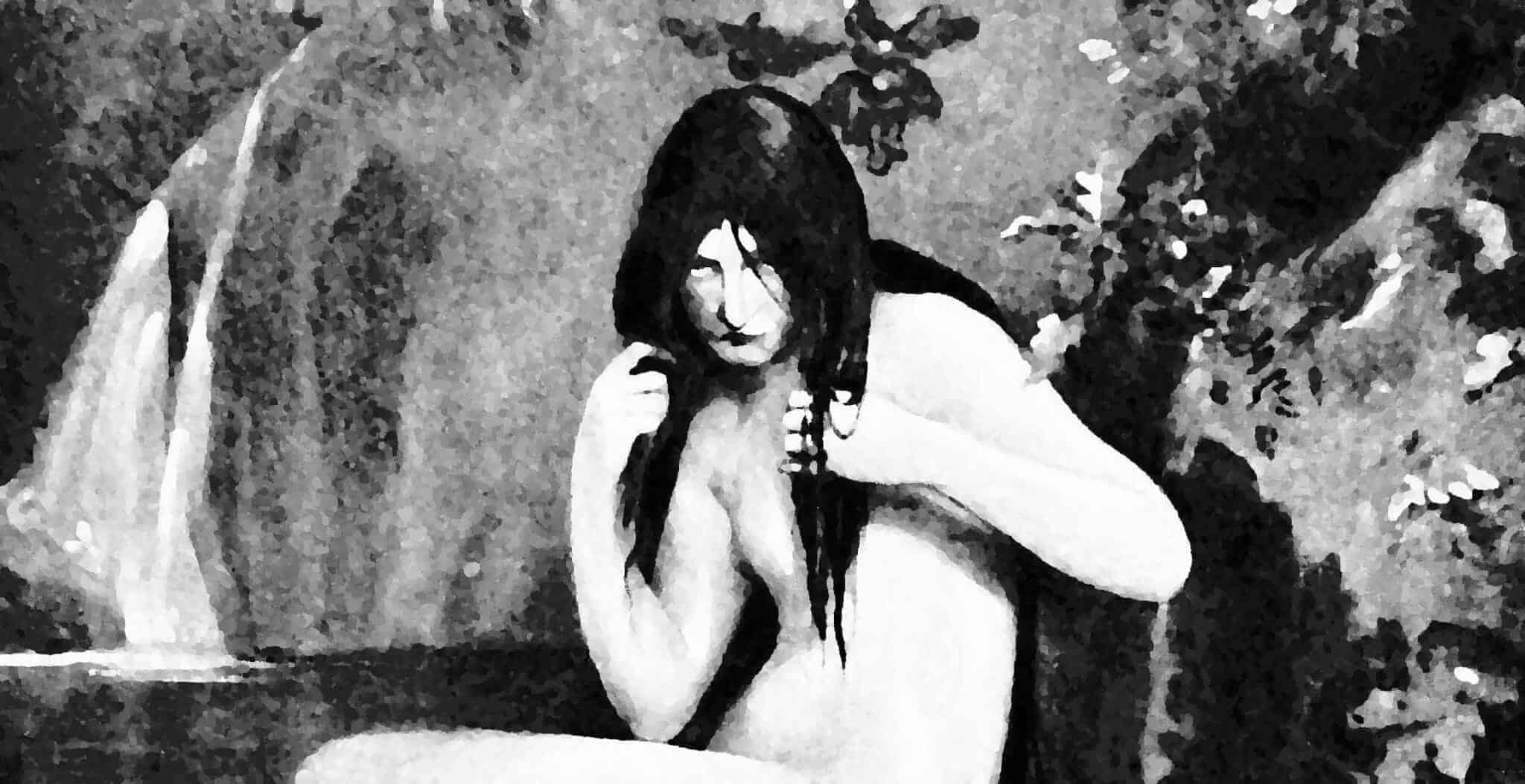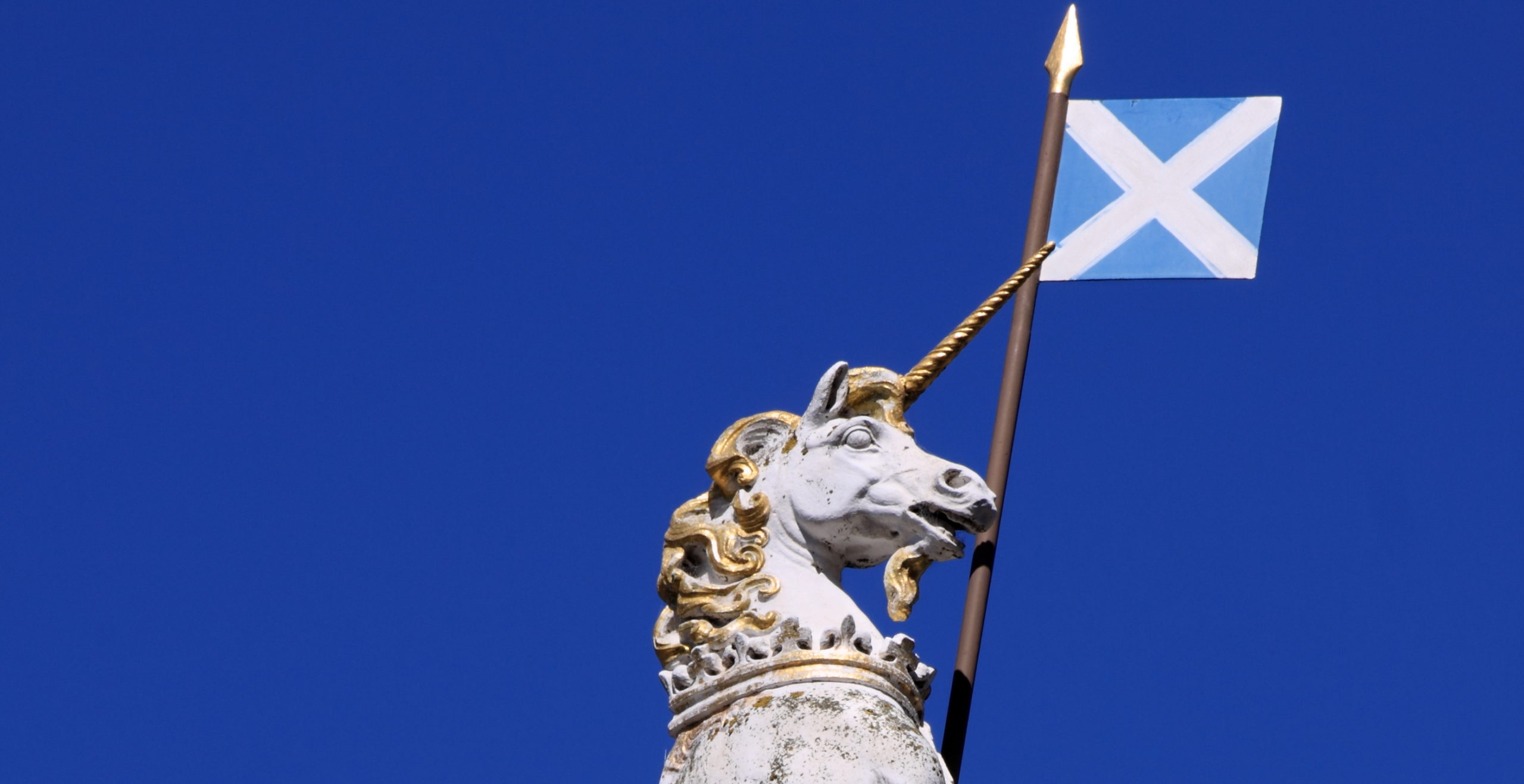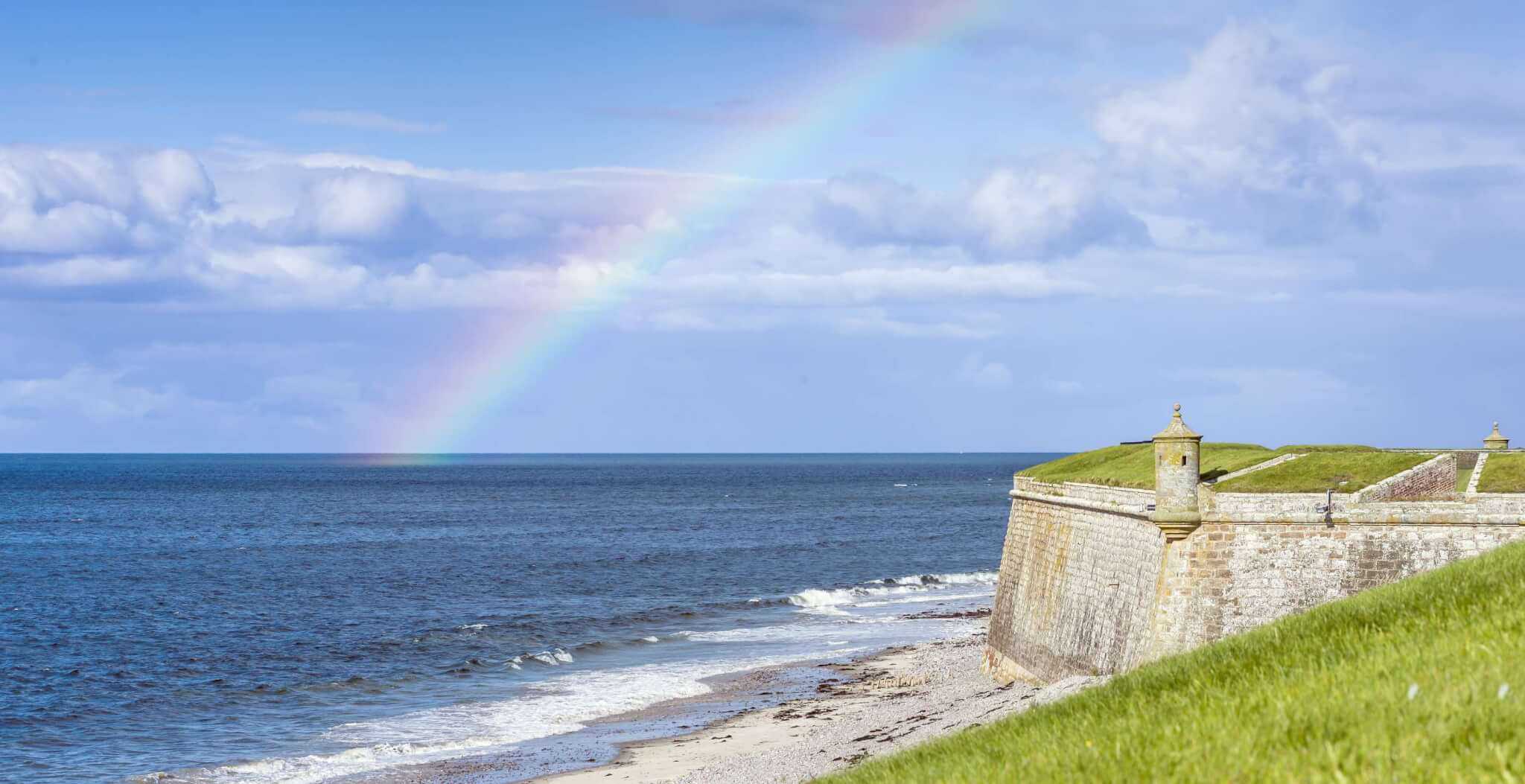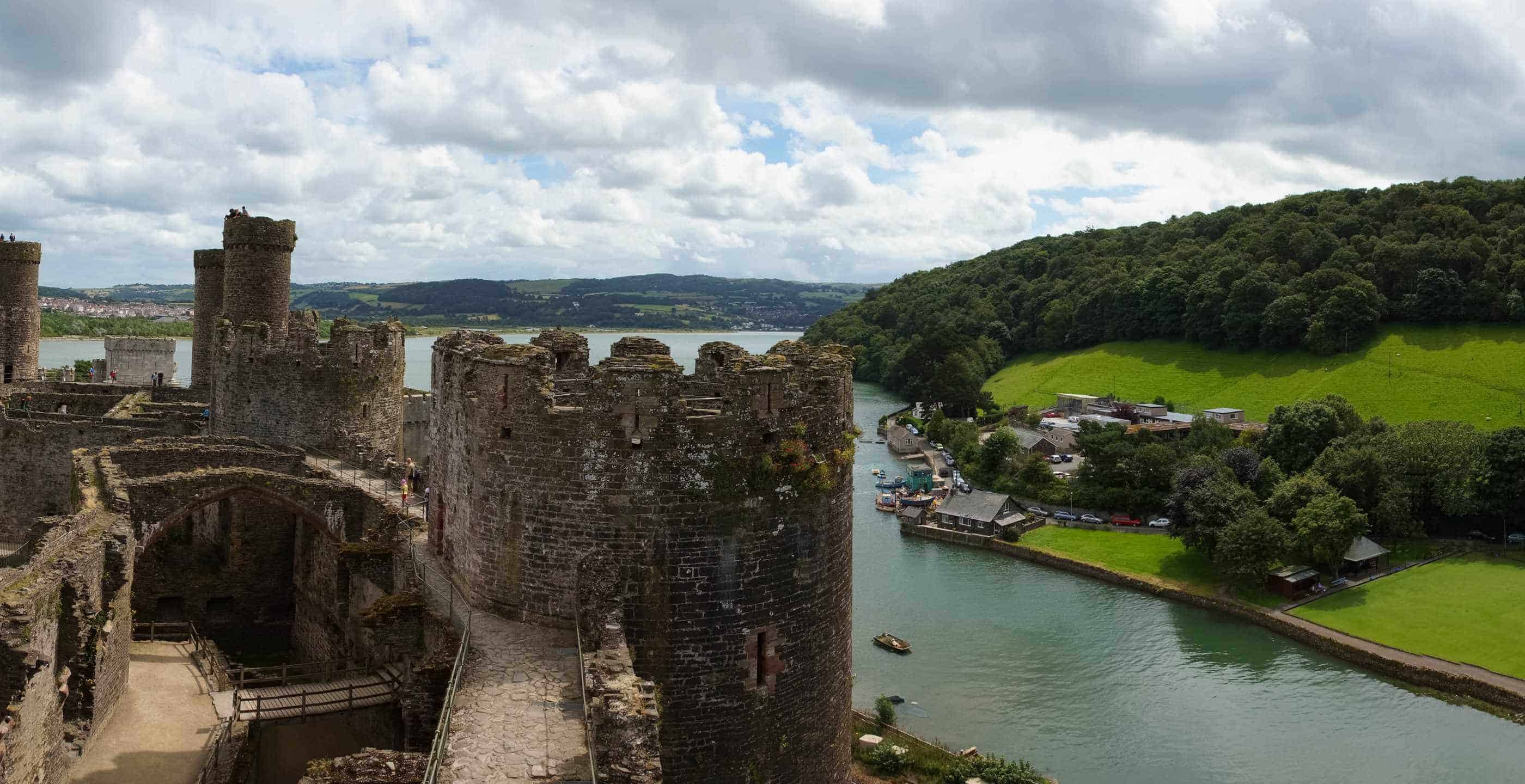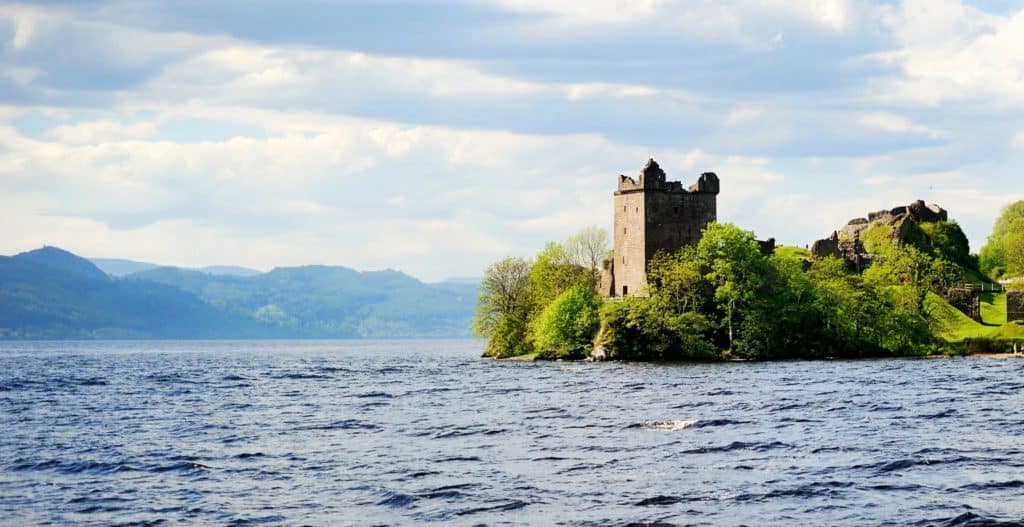On a stormy night in February 1919, young Jock Forbes and his father were returning in their pony cart from Inverness. Nearing the hamlet of Inverfarigaig their pony suddenly started and backed away. Jock and his father peered ahead, there was something crossing the road, coming out of the forest and ambling towards the Loch. As they tried to calm the pony they were aware that whatever was in the road before them was a very big animal. As it splashed into the water and Jock’s father murmured to himself in Gaelic, they spurred the pony forward and rushed home. Jock later recalled that they never spoke of the incident again.
The Loch Ness monster is well known to be a water dwelling creature, but few realise that over the years it has made several forays onto the land.
The first recorded land sighting occurred in 1879, when a group of children spotted it by the Aldourie Cemetery ‘waddling’ down the hillside towards the Loch, and in the following years a trickle of land based incidents continued to be reported.
The fact that ‘Nessie’ occasionally appeared on land was not fully known about by the wider public until 1933. That year on 22nd of July it was spotted by Mr and Mrs George Spicer, a London couple returning from a Scottish holiday.
They were travelling along the Dores to Foyers road when 200 yards in front of them they noticed an unusual grey object crossing the road. First they saw what appeared to be a trunk like object, which was then followed by a large body. Mr Spicer later claimed it looked like a “scenic railway.” The couple realised that whatever it was it was a living being, and watched in fascinated horror as it jerked across the road and vanished into the water. The vegetation the creature had passed through was flattened; locals later stated that large patches of crushed bracken and weeds were commonly associated with the monster.
The Spicer’s sighting was met with both fascination and ridicule. It was one thing to have the monster appear in the water, but quite another for it to be crossing the road!
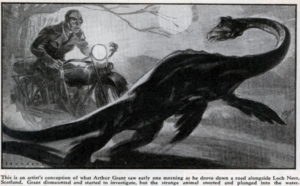
The Spicer’s were vindicated when a similar creature in similar circumstances was spotted the following January by Arthur Grant, a Veterinary student. Grant was returning from Inverness on his motorbike around 1.00 a.m. when he almost collided with a dark object coming across the road. In the bright moonlight Grant was able to notice the animals small head, long neck, large body, flippers and tail. Frightened by the motorbike it quickly fled back into the Loch. Grant was amazed; it was unlike any animal he had ever seen.
Later that year Margaret Munro again spotted the animal out of the water. A housemaid at Kilchumein Lodge, she watched it through binoculars as it rolled about on the shingled beach of Borlum Bay. Like the others she described it as being grey and having a long neck, small head, large body, flippers and humps. It was quite happy sunning itself on the shore and after a period of around twenty-five minutes it slipped back into the water. Later that day her employers walked down to the beach and noticed that the shingle was indented, as if something of considerable size had been lying there.
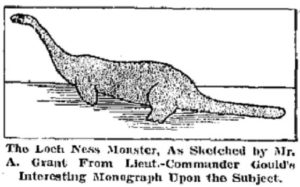
In the early 1960s ‘monster hunter’ Torquil Macleod, spotted the animal half submerged in water, lying by Horseshoe Scree, a shingled patch of hillside. It’s head, neck and front flippers were visible out of the water, and it turned its long neck from side to side. As in most land based sightings the creature eventually slid back into the water and swam away.
In 1962 the monster was by one of its favourite haunts, Urquhart Castle. Arthur Kopit and a friend heard it eating on a beach below the castle, he described how it was ‘gasping’ and ‘munching’ but when they drew closer to the spot it quickly took off for the safety of the water.
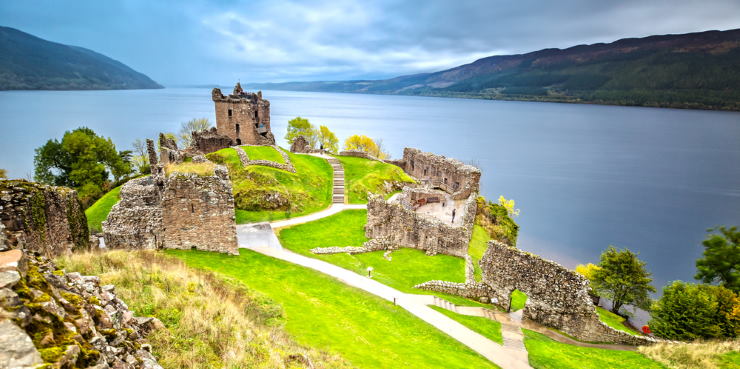
Generally land sightings of the monster are consistent with the majority of plesiosaurus like ones from the water, occasionally however witnesses have described creatures more akin to a camel than a dinosaur! Others have described an animal with hippopotamus like features.
The most recent land sighting occurred in 2009 when Ian Monckton and Tracey Gordon heard a rustling noise near where they had parked their car in a layby. The rustling was followed by a loud splash that they likened to a car rolling into the water. Ian went out to investigate and took a series of photographs; one appeared to show something unusual in the Loch.
From a folkloric perspective the concept of ‘Nessie’ on land is not so peculiar. In the myths told about the Kelpie, or Water Horse, found throughout Scotland, a Kelpie is a creature that primarily lives in bodies of water often luring its victims to their watery graves by first presenting itself on land as a beautiful horse. Luckily sightings of the Loch Ness Monster, as we know it, have never resulted in disaster, so on your next trip to the Loch keep an eye out for anything unusual ambling down the road.
Erin Bienvenu is a freelance writer with a passion for history and literature.
